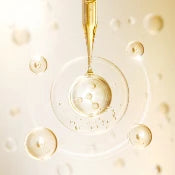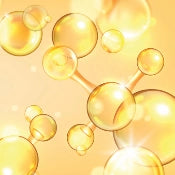Azelaic acid cream stands as one of dermatology’s most versatile treatments, offering relief for multiple skin conditions with a single, naturally derived compound. Azelaic acid cream is a topical cream, making it easy to apply directly to affected areas. If you’re battling persistent acne, rosacea, or stubborn hyperpigmentation, this multitasking ingredient might be the solution your skincare routine has been missing.
Unlike many harsh treatments that target just one skin concern, azelaic acid addresses several issues simultaneously while maintaining a favorable safety profile. This comprehensive guide explores everything you need to know about this remarkable treatment option, from its scientific mechanisms to practical application tips.
What is Azelaic Acid Cream?
Azelaic acid cream is a topical medication and prescription treatment derived from grains like wheat, rye, and barley. This naturally occurring dicarboxylic acid is also produced by the yeast Malassezia furfur (previously known as Pityrosporum ovale), which naturally lives on normal skin.
Commercial preparations come in various concentrations ranging from 5% to 20%, with prescription-strength formulations typically containing 15-20% azelaic acid. Azelaic acid is available in several topical forms, including creams, lotions, and gels, which are commonly used for acne treatment. The FDA approved azelaic acid for treating acne vulgaris and papulopustular rosacea in 1995, making it a well-established treatment with decades of clinical use.
What makes azelaic acid cream particularly valuable is its multifaceted approach to skin health. It works by:
- Reducing inflammation in affected areas
- Unclogging pores by normalizing the shedding of dead skin cells
- Exhibiting antimicrobial properties against acne-causing bacteria
- Inhibiting melanin production to address hyperpigmentation
This combination of actions explains why dermatologists frequently recommend it for multiple skin concerns, often when other treatments have failed to provide adequate relief
How Azelaic Acid Cream Works
The remarkable versatility of azelaic acid stems from its multiple mechanisms of action, allowing it to address several skin concerns simultaneously. Acne often develops when oil glands (sebaceous glands) produce excess sebum, which, combined with dead skin cells, can clog the hair follicle and lead to breakouts. Azelaic acid helps prevent the formation of comedones, both open (blackheads) and closed (whiteheads), by reducing microcomedones and minimizing pore blockages.
Normalization of Keratinization
One of the fundamental causes of acne formation is abnormal keratinization—the process by which skin cells mature and shed. When this process goes awry, dead skin cells stick together instead of sloughing off naturally, leading to clogged hair follicles and eventually pimples.
Azelaic acid cream normalizes this keratinization process, preventing the formation of microcomedones (early stage pimples) by:
- Promoting proper shedding of dead skin cells
- Preventing pore blockages that lead to blackheads
- Reducing the buildup of keratin within hair follicles
Antimicrobial Properties
The bacteria Cutibacterium acnes (formerly known as Propionibacterium acnes) plays a significant role in developing acne. These bacteria thrive in the oily environment of clogged pores, triggering inflammation and acne lesions. Azelaic acid demonstrates potent antibacterial activity against these microorganisms, helping to:
- Reduce bacterial populations on the skin
- Prevent bacterial proliferation without creating resistance
- Address one of the primary triggers of inflammatory papules

Anti-inflammatory effects
Inflammation represents the redness, swelling, and pain often associated with acne, rosacea, and other skin conditions. Azelaic acid’s anti-inflammatory properties help calm irritated skin by:
- Inhibiting inflammatory mediators and cytokines
- Reducing neutrophil activity (a type of white blood cell involved in inflammation)
- Decreasing the production of inflammatory chemicals that contribute to redness
This ability to reduce inflammation makes it particularly valuable for treating conditions like rosacea, where inflammation plays a central role in symptom manifestation.
Tyrosinase Inhibition
For those struggling with hyperpigmentation, azelaic acid offers significant benefits through its ability to inhibit tyrosinase, an enzyme crucial for melanin production. By blocking this enzyme, azelaic acid can:
- Prevent excess melanin formation
- Gradually fade existing dark spots
- Address post-inflammatory hyperpigmentation that often follows acne
What’s particularly remarkable is that azelaic acid selectively targets hyperactive melanocytes (the cells that produce melanin) while sparing normal cells, making it both effective and safe for treating various types of hyperpigmentation.
Benefits and Uses
From tackling stubborn acne breakouts to calming rosacea flares and fading dark spots, azelaic acid cream offers an impressive range of benefits for affected skin. The extent and distribution of acne lesions on the affected area can influence which treatment strategies are most effective.
Who Can Benefit from Azelaic Acid Cream?
Azelaic acid cream is suitable for a wide range of individuals, including teenagers and adults who experience mild to moderate acne. A positive family history can increase the risk of developing acne, making early evaluation important. It is also beneficial for those with post-inflammatory hyperpigmentation, melasma, rosacea, and individuals prone to scarring.
Early intervention is crucial to prevent the formation of a scar, which can result from untreated or severe acne lesions. For those with severe or nodulocystic acne, these represent a severe form of the condition that may require more intensive treatment. Azelaic acid cream is one of several treatment options available for acne management, and it can be used alone or in combination with other therapies depending on the severity and characteristics of the condition.
Treating Acne Vulgaris
Acne vulgaris, the common skin condition affecting millions worldwide, responds well to azelaic acid treatment due to the ingredient’s multifaceted approach:
- Reduces comedones: By normalizing keratinization, azelaic acid helps prevent and treat both blackheads and whiteheads
- Fights bacteria: Its antimicrobial properties target C. acnes bacteria that contribute to acne formation
- Calms inflammation: Reduces the redness and swelling associated with inflammatory papules
- Addresses scarring: Helps fade the post-inflammatory hyperpigmentation that can linger after acne heals
For those with mild to moderate acne, azelaic acid cream can serve as an effective standalone treatment. For severe acne or nodulocystic acne, it may be used as part of a comprehensive treatment regimen prescribed by a dermatologist.
Managing Rosacea
Papulopustular rosacea, characterized by facial redness, visible blood vessels, and acne-like bumps, can significantly impact quality of life and self-esteem. Azelaic acid cream has become a mainstay in rosacea treatment because it:
- Reduces the papules and pustules associated with this condition
- Decreases overall facial redness and inflammation
- Addresses the abnormal inflammatory response believed to underlie rosacea
- Provides these benefits without the risk of bacterial resistance that comes with antibiotics
Many patients with rosacea who cannot tolerate other treatments find that azelaic acid offers relief with minimal irritation.
Fading Hyperpigmentation
Hyperpigmentation, whether from sun damage, post-inflammatory changes, or melasma, can be stubborn and frustrating. Azelaic acid cream helps by:
- Inhibiting tyrosinase to prevent new melanin formation
- Gradually lightening existing dark spots
- Providing a safer alternative to hydroquinone for long-term use
- Working effectively on all skin types without risk of paradoxical darkening
While it may take several months to see dramatic improvement in hyperpigmentation, consistent use of azelaic acid cream often yields impressive results.
Improving Overall Skin Texture
Beyond its specific therapeutic applications, many users report general improvements in skin texture and appearance with regular azelaic acid use:
- Smoother skin surface
- More even skin tone
- Reduced appearance of acne scars
- Refinement of visible pores
These benefits make azelaic acid cream a valuable addition to skincare routines even for those whose primary concerns have been addressed.
How to Use Azelaic Acid Cream
Proper application of azelaic acid cream is straightforward, but following a few key guidelines will maximize its effectiveness and minimize potential irritation. If you miss a dose, do not apply a double amount; simply continue with your next dose as scheduled.
Basic Application Instructions
- Cleanse first: Wash your face with a gentle, non-irritating cleanser and pat dry. Avoid harsh soaps that can strip the skin and potentially increase irritation.
- Apply a thin layer: Using your fingertips, apply a small amount of azelaic acid cream to the affected areas or as directed by your healthcare provider. A pea-sized amount is typically sufficient for the entire face.
- Gentle massage: Lightly massage the cream into your skin until fully absorbed. Avoid aggressive rubbing, which can irritate sensitive skin.
- Wash hands: Thoroughly wash your hands after application to avoid transferring the medication to unintended areas.
- Follow with moisturizer: If your skin tends to be dry, apply a non-comedogenic moisturizer after the azelaic acid cream has been absorbed (waiting about 10-15 minutes).

Application Tips
- Start gradually: If you’re new to azelaic acid, begin with once-daily application to build tolerance, then increase to twice daily as recommended by your dermatologist.
- Timing matters: Apply morning and evening for best results, unless otherwise directed.
- Avoid sensitive areas: Keep the product away from your eyes, mouth, and mucous membranes.
- Sunscreen is essential: Always apply broad-spectrum SPF 30+ during daytime use, as azelaic acid can increase photosensitivity. This also helps prevent further hyperpigmentation.
- Wait between products: Allow 20-30 minutes before applying other skin products over azelaic acid cream to ensure proper absorption.
- Be patient: Consistent use for 8-12 weeks is typically needed to see optimal results. Take photos periodically in the same lighting to track your progress.
Potential Product Interactions
When using azelaic acid cream, be mindful of potential interactions with other skincare ingredients. Azelaic acid cream may interact with certain medications, so it is important to inform your healthcare provider about all medications and supplements you are taking.
- Proceed cautiously with exfoliants: Products containing alpha hydroxy acids (like glycolic acid), beta hydroxy acids (like salicylic acid), or retinoids can increase sensitivity when used with azelaic acid.
- Space out active ingredients: If using other active treatments or medications, consider applying them at different times of day than your azelaic acid cream to minimize irritation. Always consult a healthcare professional before combining azelaic acid cream with other medications to prevent adverse effects.
- Avoid alcohol-based products: Toners or other skin products containing high concentrations of alcohol can increase dryness and irritation.
Before starting azelaic acid cream, discuss all current medications with your healthcare provider to ensure safe and effective use.
Side Effects and Precautions
While generally well-tolerated by most skin types, azelaic acid cream can cause some temporary side effects, particularly during the initial weeks of treatment.
Common Side Effects
Most side effects of azelaic acid cream are mild and tend to diminish as your skin adjusts to the treatment:
- Skin irritation: A mild burning or stinging sensation immediately after application
- Dryness: Temporary flaking or peeling of the skin
- Redness: Slight reddening of the treated areas
- Itching: Mild itchiness that typically subsides with continued use
- Peeling: Light exfoliation as dead skin cells are shed
These reactions are typically most noticeable during the first 1-2 weeks of treatment and gradually improve as your skin adapts. Using a gentle moisturizer can help manage these symptoms.
Rare Side Effects
Though uncommon, some individuals may experience more significant reactions that warrant medical attention:
- Severe burning, stinging, or pain
- Persistent or worsening redness
- Signs of allergic reaction (hives, swelling, difficulty breathing)
- Hypopigmentation (lightening of skin beyond the target areas)
- Severe dryness or cracking of the skin

When to See a Doctor
Contact your healthcare provider if you experience:
- Persistent severe irritation that doesn’t improve after the first week
- No improvement in your condition after 12 weeks of consistent treatment
- Worsening of acne or development of new symptoms
- Signs of bacterial infection in treated areas (increased pain, warmth, pus formation)
- Any severe or unusual reactions
Special Precautions
Certain individuals should take extra precautions when using azelaic acid cream:
- Sensitive skin: Start with a lower concentration product and apply every other day initially
- Eczema or extremely dry skin: Consult with a dermatologist before use
- History of herpes simplex: Azelaic acid may potentially trigger outbreaks in predisposed individuals
- Pityrosporum folliculitis: While azelaic acid is produced by Malassezia yeast, those with this condition should monitor for any worsening
Who Should Use Azelaic Acid Cream
Azelaic acid cream offers benefits for a wide range of individuals, particularly those dealing with acne vulgaris, rosacea, or post-inflammatory hyperpigmentation.
Ideal Candidates
Azelaic acid cream may be particularly beneficial for:
- Adults and adolescents with mild to moderate acne: Especially when inflammation and post-acne dark spots are concerns
- Individuals with papulopustular rosacea: Who need an effective anti-inflammatory treatment
- Those with post-inflammatory hyperpigmentation: Looking to fade dark marks left by healed acne
- People with melasma: Seeking a tyrosinase inhibitor safer than hydroquinone
- Individuals with sensitive skin: Who cannot tolerate harsher treatments like retinoids
-
Pregnant or breastfeeding women: Who need a safe acne treatment option
Special Considerations for Different Groups
Pregnant and Breastfeeding Women
Azelaic acid is one of the few topical acne treatments classified as Category B for pregnancy, meaning animal studies show no risk, and there are no adequate human studies. This makes it one of the safer options for treating acne during pregnancy, but you should still consult with your healthcare provider before use.
Teenagers and Young Adults
Teenagers and young adults often experience acne due to hormonal changes during puberty. Azelaic acid can be an effective treatment option for this age group, particularly for those experiencing inflammatory papules and pustules along with post-inflammatory hyperpigmentation.
Older Adults
For older adults dealing with persistent acne or rosacea alongside concerns about aging skin, azelaic acid offers multiple benefits. Its anti-inflammatory properties help with redness, while its gentle exfoliating action can improve overall skin texture.
Those with Darker Skin Tones
Individuals with darker skin tones are more prone to post-inflammatory hyperpigmentation. Azelaic acid is particularly valuable in this context as it both treats the underlying inflammatory condition and addresses the resulting hyperpigmentation without risk of paradoxical darkening or hypopigmentation that can occur with other treatments.
Comparing Azelaic Acid to Other Treatments
Understanding how azelaic acid compares to other acne treatments and skincare ingredients, including other topical treatments, can help you determine if it’s the right choice for your specific concerns. For example, while azelaic acid is effective in treating dark spots, hydroquinone is another common treatment for hyperpigmentation and is often compared to azelaic acid for this purpose. If you experience a sudden onset of severe acne, this may indicate an underlying health issue and should prompt immediate medical evaluation.
Azelaic Acid vs. Retinoids
|
Feature |
Azelaic Acid |
Retinoids |
|---|---|---|
|
Irritation potential |
Generally lower |
Often higher, especially initially |
|
Photosensitivity |
Minimal |
Significant |
|
Pregnancy safety |
Category B (relatively safe) |
Category X (contraindicated) |
|
Speed of results |
Moderate |
Variable (purging may occur first) |
|
Effect on pores |
Good |
Excellent |
|
Hyperpigmentation effect |
Excellent |
Good |
Retinoids like tretinoin are powerful for treating acne and signs of aging, but come with more significant side effects, including dryness, peeling, and increased sun sensitivity. Azelaic acid tends to be better tolerated, especially by those with sensitive skin or rosacea, though it may not be as effective for severe acne as prescription-strength retinoids.
Azelaic Acid vs. Benzoyl Peroxide
While both have antimicrobial properties against acne-causing bacteria, they differ in several important ways:
- Irritation: Benzoyl peroxide typically causes more dryness and irritation
- Bleaching: Benzoyl peroxide can bleach fabrics and hair; azelaic acid does not
- Hyperpigmentation: Azelaic acid actively treats dark spots; benzoyl peroxide does not
- Bacterial resistance: Neither tends to create bacterial resistance, unlike antibiotics
For inflammatory acne with significant bacterial involvement, benzoyl peroxide may work more quickly. However, for those also concerned with skin tone and post-acne marks, azelaic acid offers additional benefits.
Azelaic Acid vs. Salicylic Acid
Salicylic acid is a beta-hydroxy acid that excels at penetrating oil-clogged pores:
- Exfoliation type: Salicylic acid is oil-soluble and works primarily on pore contents; azelaic acid affects both surface skin and has antimicrobial properties
- Anti-inflammatory effect: Both have anti-inflammatory properties, though through different mechanisms
- Hyperpigmentation: Azelaic acid is superior for addressing pigmentation concerns
- Rosacea treatment: Azelaic acid is FDA-approved for rosacea; salicylic acid may be too irritating
Those with primarily blackheads and whiteheads without significant inflammation may respond well to salicylic acid, while those with inflammatory papules and post-acne marks might prefer azelaic acid.

Azelaic Acid vs. Vitamin C
Both ingredients are valued for their brightening properties, but they work differently:
- Mechanism: Vitamin C is primarily an antioxidant that inhibits melanin production indirectly; azelaic acid directly inhibits tyrosinase
- Stability: Azelaic acid is more stable in formulations; vitamin C can oxidize quickly
- Acne treatment: Azelaic acid has specific anti-acne properties; vitamin C does not
- Collagen production: Vitamin C stimulates collagen; azelaic acid does not have this benefit
Rosehip extract is a rich source of vitamin C and is often included in supplements for its antioxidant and skin-brightening benefits. In addition to supporting skin health, rosehip extract is also valued for its anti-inflammatory properties, which can help reduce joint stiffness, improve flexibility, and support overall bone strength.
Many find that vitamin C and azelaic acid complement each other well when used as part of a comprehensive skincare routine vitamin C in the morning for antioxidant protection and azelaic acid in the evening for its therapeutic benefits.
Getting the Best Results
Maximizing the benefits of azelaic acid cream requires more than just applying the product, a holistic approach to skin care will enhance and maintain your results.
Consistency is Key
For optimal results with azelaic acid cream:
- Establish a routine: Apply your medication at the same time each day to maintain consistent levels of the active ingredient on your skin.
- Don’t skip applications: Missing doses reduces effectiveness. If you forget your morning application, apply when you remember and continue with your regular schedule.
- Be patient: Most users begin seeing improvements within 4-8 weeks, but optimal results typically require 12 weeks or more of consistent use.
- Track your progress: Take photos in the same lighting every 2-4 weeks to objectively monitor improvements.
Complementary Skincare
The products you use alongside azelaic acid can either enhance or diminish its effectiveness:
- Gentle cleanser: Use a mild, non-comedogenic cleanser that won’t strip your skin barrier or cause additional irritation.
- Hydration: Apply a fragrance-free moisturizer compatible with acne-prone skin to combat potential dryness.
- Sun protection: Daily application of broad-spectrum SPF 30+ is essential, as sun exposure can worsen hyperpigmentation and counteract the benefits of your treatment.
- Avoid potential irritants: Minimize use of products containing alcohol, fragrance, or essential oils that could increase irritation.
Lifestyle Factors
Several lifestyle elements can impact your skin’s response to azelaic acid treatment:
- Stress management: Chronic stress can trigger hormonal changes that worsen acne and rosacea. Consider incorporating stress-reduction techniques, such as meditation or yoga.
- Diet considerations: While research is ongoing, some individuals find that reducing dairy, high-glycemic foods, or specific trigger foods improves their skin condition.
- Sleep quality: Poor sleep can increase inflammation and stress hormones, potentially counteracting treatment benefits. Aim for 7-8 hours of quality sleep.
- Hydration: Proper hydration supports overall skin health and barrier function.
Long-term Maintenance
Once you’ve achieved your desired results, consider these strategies for maintaining them:
- Gradual reduction: Rather than stopping azelaic acid entirely, consider reducing application frequency to once daily or every other day.
- Seasonal adjustments: You may need more frequent application during seasonal changes or hormonal fluctuations around your menstrual cycle.
- Ongoing prevention: Continue with sun protection and gentle skincare to prevent recurrence of hyperpigmentation or acne.
- Regular dermatologist visits: Schedule periodic check-ins with your healthcare provider to assess your skin’s condition and adjust treatment as needed.
Storage and Handling
To maintain the effectiveness of your azelaic acid cream:
- Store in a cool and dry place, away from direct sunlight
- Keep the container tightly closed when not in use
- Check the expiration date and discard the expired product
- Do not freeze or expose to excessive heat
- Keep out of reach of children
When to Consider Alternative Treatments
While azelaic acid cream is effective for many people, it may not be the optimal solution for everyone. Consider consulting your dermatologist about alternative or additional treatments if:
- You see no improvement after 12 weeks of consistent use
- You develop severe acne that includes deep, painful nodules
- Your acne worsens despite consistent treatment
- You experience intolerable side effects
- You have significant scarring that requires more aggressive intervention
For severe forms of acne or complicated cases of rosacea, your healthcare provider might recommend combination therapy or alternative treatments such as:
- Oral antibiotics for severe inflammatory acne
- Isotretinoin for severe, scarring acne
- Laser or light therapies for persistent rosacea
- Procedural interventions for acne scars
It is important to note that azelaic acid cream is not indicated for joint disorders, joint pain, joint stiffness, or for supporting joint health, as its benefits are specific to skin conditions.
Conclusion
Azelaic acid cream stands as a remarkably versatile topical treatment with multiple mechanisms of action that address several common skin concerns simultaneously. Its ability to normalize keratinization, fight bacteria, reduce inflammation, and inhibit melanin production makes it an excellent option for those dealing with acne vulgaris, rosacea, or hyperpigmentation.
What sets azelaic acid apart from many other treatments is its favorable safety profile, making it appropriate for long-term use and safe for special populations, including pregnant women. While it may not work as rapidly as some more aggressive treatments, its gentle yet effective approach provides lasting benefits with minimal side effects.
If you’re struggling with persistent skin concerns and looking for a well-researched treatment option with multiple benefits, consider consulting with your dermatologist about incorporating azelaic acid cream into your skincare routine. With consistent application and complementary skincare practices, you may find that this multitasking ingredient is the solution your skin has been waiting for.
Frequently Asked Questions
Which Azelaic Acid-based ingredients does Flychem supply for cosmetic formulations?
Flychem supplies premium-grade Azelaic Acid-based cosmetic ingredients, particularly Azentis™ (Azelaic Acid 98%), which is suitable for a wide variety of skincare applications and formulations.
Does Flychem offer regulatory and compliance support for Azelaic Acid ingredients?
Yes, Flychem supplies comprehensive regulatory support, including Certificates of Analysis (COA), Technical Data Sheets (TDS), Material Safety Data Sheets (MSDS), and related compliance documents.
What are Flychem’s minimum order quantity (MOQ) requirements for Azelaic Acid products?
We maintain a highly flexible policy with no strict MOQ restrictions, enabling you to order customized quantities tailored to your exact formulation needs.
How quickly will Flychem dispatch an Azelaic Acid order once placed?
Flychem typically dispatches Azelaic Acid orders within 24 to 48 hours, ensuring timely availability for your production schedules.
Can customers request customized quantities or samples of Azelaic Acid from Flychem?
Yes, Flychem readily offers customized samples and quantity options for Azelaic Acid to facilitate your product development and formulation evaluations.













